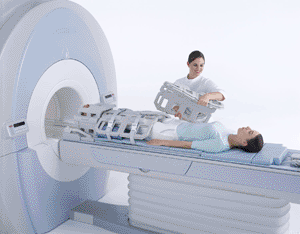Patient-Friendly Diagnostic Imaging Helps Improve Pediatric Care
By MedImaging International staff writers
Posted on 09 May 2011
One of the leading pediatric centers in the United States is treating pediatric patients with disorders ranging from congenital heart disease to abdominal pain, to emergency trauma to juvenile diabetes, and pediatric cancer. To diagnose, treat, and monitor its pediatric patients effectively, the center uses a range of sophisticated diagnostic imaging systems that includes ultrasound, computed tomography (CT), and magnetic resonance imaging (MRI).Posted on 09 May 2011
The imaging technology was developed by Toshiba Medical Systems (Tokyo, Japan) including the Vantage Atlas MR system, Aquilion 64 CT system, Aplio XG ultrasound system and Kalare fluoroscopy unit. "We understand that children are not just small adults and have unique needs when it comes to imaging,” explained Dr. Phillip Silberberg, pediatric radiologist, Kosair Children's Medical Center (KCMC; Brownsboro, TX, USA), part of Kosair Children's Hospital and the not-for-profit Norton Healthcare. "We are committed to the Image Gently campaign philosophy and always seek to improve patient safety in imaging. By having access to a range of imaging modalities, KCMC can select the most appropriate exam for the specific patient condition.”

Image: The Vantage Atlas MR for routine MR imaging (Photo courtesy of Toshiba Medical Systems).
KCMC uses Toshiba's Vantage Atlas MR for routine MR imaging and for advanced imaging. Toshiba's Vantage Atlas MR includes features designed to improve patient comfort, which makes the MR exam easier for pediatric patients. Toshiba's patient-friendly MR features include Pianissimo technology, which reduces noise by up to 90% during MR exams, creating a quieter, more comfortable exam; a short, open bore that provides a feeling of openness and reduces claustrophobia; and Atlas integrated coil technology, which reduces the need to reposition patients during an exam.
According to Lori Bischoff, manager of diagnostic imaging, Kosair Children's Medical Center, Brownsboro, parents have commented on how quiet the MR system is. It particularly makes a difference for children with autism or those with developmental delays, and infants and young children who may not fully understand the procedure, or who are easily frightened. "Toshiba's Pianissimo noise reduction creates a quieter, less scary exam for our patients, while the Atlas integrated coils save us time, since we no longer need to reposition patients during an exam,” explained Ms. Bischoff. "We've seen these features result in faster, more comfortable exams for our patients.”
KCMC uses Toshiba's Aplio XG ultrasound as a first-line diagnostic tool for some acute patients, especially infants, depending on the condition. Toshiba's Aplio XG is well suited for pediatric settings as its high frequency transducers and small footprint probes produce high-quality images on smaller patients. For some acute conditions, KCMC uses ultrasound first and then switches to CT when further information is required.
"When time is of the essence for pediatric trauma patients with potential head injuries or abdominal injuries and patients with infections, including appendicitis and others with hydrocephalus, CT is often used to quickly and accurately diagnose acute conditions,” said Dr. Silberberg. "CT can be an important tool to diagnose trauma in the head and body from accidents, evaluate shunts and much more.”
Toshiba's Aquilion 64 CT system offers sophisticated dose reduction features, making it suitable for busy pediatric emergency departments. For example, SureExposure Pediatric software offers the ability to "child size” exams. Simply by entering the patient's age or weight, SureExposure Pediatric automatically makes the adjustments needed to acquire the quality images physicians need to make accurate diagnoses with the least radiation possible. KCMC also uses the Kalare fluoroscopy unit for low dose exams on the upper and lower GI.
"Toshiba understands children have different imaging needs than adults and develops imaging technology to make exams as fast, safe and comfortable as possible for pediatric patients,” said Doug Ryan, vice president, marketing and strategic development, Toshiba. He further noted that Kosair Children's Medical Center and Toshiba are working together on new advancements in MR to continue to improve patient care in pediatric imaging.
Related Links:
Toshiba Medical Systems
Kosair Children's Medical Center, Brownsboro













